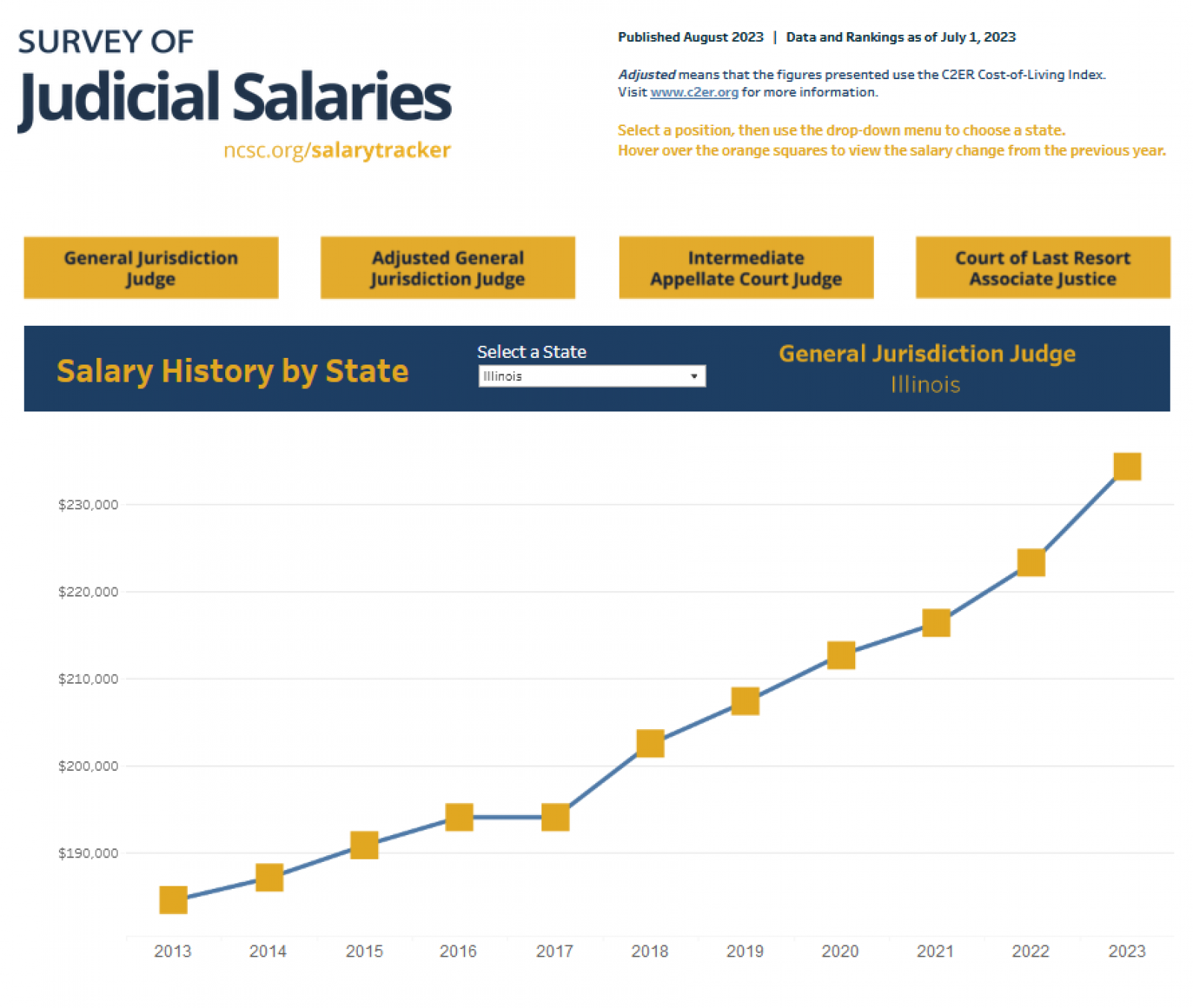September 6, 2023
There are notable trends in judicial salaries from the Judicial Salary Survey (JSS) over the last 10 years. The Judicial Salary Survey collects the salaries of judicial officers in the U.S., District of Columbia, and its territories. The Salary History by State was added to the Salary Tracker this past year to enable courts to see their own trend lines for the last 10 years.
For general jurisdiction trial court judges:
- These judges averaged $143,989 in July 2014 and $176,430 in July 2023, an increase of 22.5% or around 2.3% a year.
- When there were increases over the last decade, they ranged from $600 to $76,082. The increases ranged from 0.67% to as high as 56%.
- Every state other than Nevada has reported a salary increase in this decade.
- South Carolina has increased judicial salaries the most over the last decade from $136,905 in July 2014 to $212,987 in July 2023, an increase of 56%. Additionally, Utah, New Mexico, South Dakota, and Washington salaries have increased by over 40%.
For appellate court judges:
- Intermediate appellate court judges averaged $153,128 in July 2014 and $192,170 in the July 2023 data, a change of 25% or about 2.5% a year.
- Associate justices of courts of last resort averaged $162,813 in July 2014. Today that number is up to $197,880, a change of 22% or about 2% per year.
State courts frequently use the JSS data as a basis of comparison to request salary increases from their state legislatures. Here are just a few examples:
- Arkansas judges and prosecuting attorneys asked the Arkansas Independent Citizens Commission to grant them a pay raise and provided JSS salary survey results to show a comparison among states.
- The Michigan Judiciary presented survey data to their legislature to request an increase in 2019.
- Puerto Rico cited the July 2019 Judicial Salary Survey in Senate Bill P. del S. 1106 to increase the salaries of their judges.
The JSS started in 1974 at the request of the Conference of Chief Justices and the Conference of State Court Administrators. JSS data were collected quarterly until 1981, after which the survey was changed to semiannual. A cost-of-living index has been included since April 2005 to allow additional salary comparison points between states.
The JSS has featured other significant reports, including a look at judicial salaries before and immediately after the Great Recession (2011). In 2022 NCSC surveyed states to gather detailed information on how states set their judicial salaries and increases.
Share the impact of the JSS on your judicial salaries via Knowledge@ncsc.org or call 800-616-6164. Follow the National Center for State Courts on Facebook, Twitter, LinkedIn, and Vimeo.
